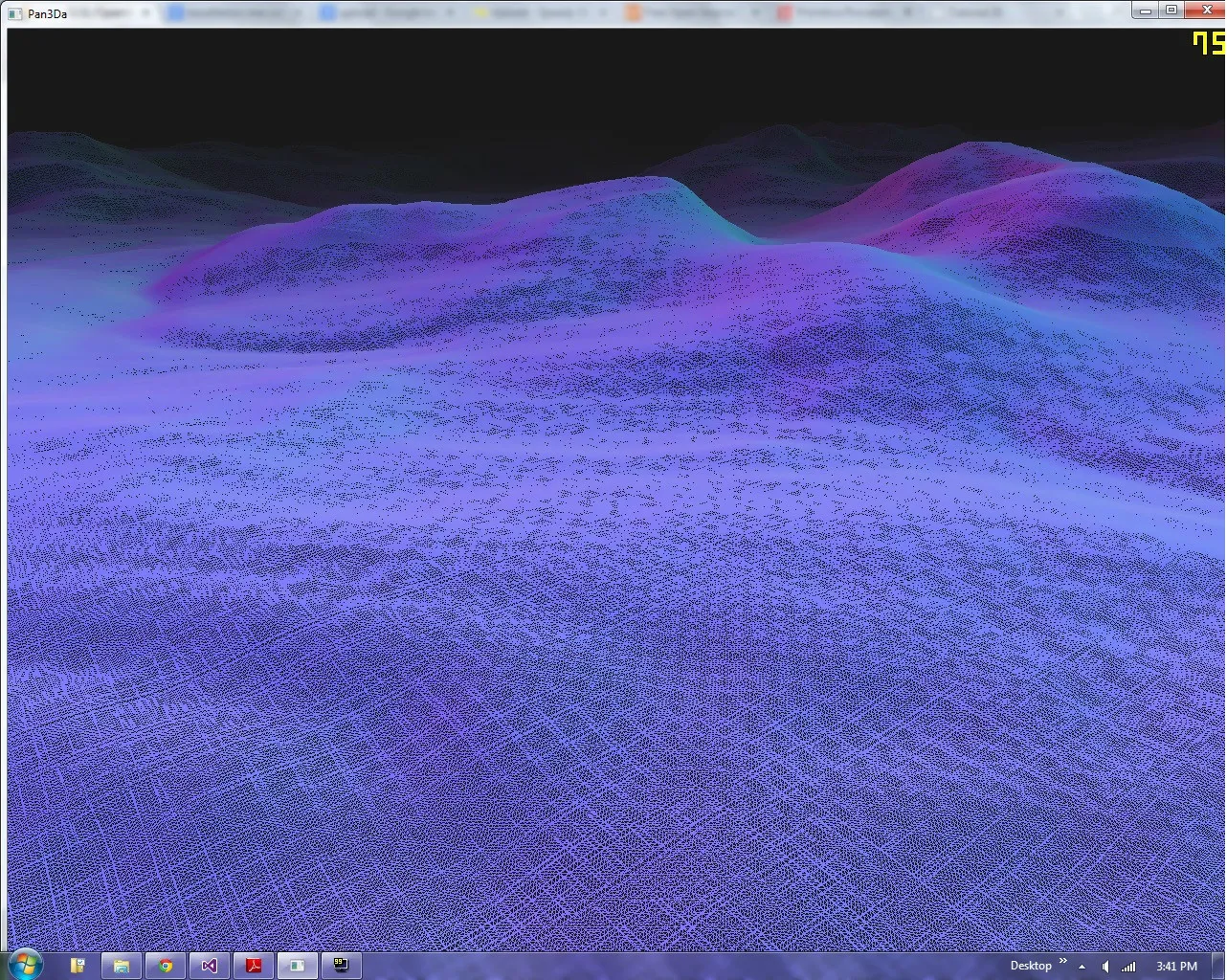我刚开始接触OpenGL镶嵌技术,并遇到一些问题。我正在对由一个顶点形成的一系列补丁进行细分。这些顶点/补丁以网格状的方式结构化,以后会形成由Perlin噪声生成的地形。
我遇到的问题是,从第二个补丁开始,每隔5个补丁,有时会有大量细分(不是我配置的方式),但大多数时候根本没有细分。
例如:

两个白色圆圈标志着细分过度的补丁。还请注意未被细分的补丁的模式。
奇怪的是,在我的Surface Pro 2(Intel HD4400图形)上可以工作,但在我的主要台式计算机(AMD HD6950图形)上出现故障。可能是硬件有问题吗?
使用以下代码生成这些补丁:
vec4* patches = new vec4[m_patchesWidth * m_patchesDepth];
int c = 0;
for (unsigned int z = 0; z < m_patchesDepth; ++z) {
for (unsigned int x = 0; x < m_patchesWidth; ++x) {
patches[c] = vec4(x * 1.5f, 0, z * 1.5f, 1.0f);
c++;
}
}
m_fxTerrain->Apply();
glGenBuffers(1, &m_planePatches);
glBindBuffer(GL_ARRAY_BUFFER, m_planePatches);
glBufferData(GL_ARRAY_BUFFER, m_patchesWidth * m_patchesDepth * sizeof(vec4), patches, GL_STATIC_DRAW);
GLuint loc = m_fxTerrain->GetAttrib("posIn");
glEnableVertexAttribArray(loc);
glVertexAttribPointer(0, 4, GL_FLOAT, GL_FALSE, sizeof(vec4), nullptr);
delete(patches);
并用以下方式绘制:
glPatchParameteri(GL_PATCH_VERTICES, 1);
glBindVertexArray(patches);
glPolygonMode(GL_FRONT_AND_BACK, GL_LINE);
glDrawArrays(GL_PATCHES, 0, nrOfPatches);
顶点着色器:
#version 430 core
in vec4 posIn;
out gl_PerVertex {
vec4 gl_Position;
};
void main() {
gl_Position = posIn;
}
控制着色器:
#version 430
#extension GL_ARB_tessellation_shader : enable
layout (vertices = 1) out;
uniform float OuterTessFactor;
uniform float InnerTessFactor;
out gl_PerVertex {
vec4 gl_Position;
} gl_out[];
void main() {
if (gl_InvocationID == 0) {
gl_TessLevelOuter[0] = OuterTessFactor;
gl_TessLevelOuter[1] = OuterTessFactor;
gl_TessLevelOuter[2] = OuterTessFactor;
gl_TessLevelOuter[3] = OuterTessFactor;
gl_TessLevelInner[0] = InnerTessFactor;
gl_TessLevelInner[1] = InnerTessFactor;
}
gl_out[gl_InvocationID].gl_Position = gl_in[gl_InvocationID].gl_Position;
}
评估着色器:
#version 430
#extension GL_ARB_tessellation_shader : enable
layout (quads, equal_spacing, ccw) in;
uniform mat4 ProjView;
uniform sampler2D PerlinNoise;
out vec3 PosW;
out vec3 Normal;
out vec4 ColorFrag;
out gl_PerVertex {
vec4 gl_Position;
};
void main() {
vec4 pos = gl_in[0].gl_Position;
pos.xz += gl_TessCoord.xy;
pos.y = texture2D(PerlinNoise, pos.xz / vec2(8, 8)).x * 10.0f - 10.0f;
Normal = vec3(0, 1, 0);
gl_Position = ProjView * pos;
PosW = pos.xyz;
ColorFrag = vec4(pos.x / 64.0f, 0.0f, pos.z / 64.0f, 1.0f);
}
片段着色器:
#version 430 core
in vec3 PosW;
in vec3 Normal;
in vec4 ColorFrag;
in vec4 PosH;
out vec3 FragColor;
out vec3 FragNormal;
void main() {
FragNormal = Normal;
FragColor = ColorFrag.xyz;
}
我已经尝试硬编码不同的镶嵌级别,但没有帮助。我最近开始使用OpenGL,请告诉我是否犯了什么错误。
那么,有人知道是什么原因导致某些补丁出现“闪烁”吗?
更新:我让朋友运行了这个项目,他得到了相同的闪烁图案,但失败的补丁根本没有被绘制,除非过度镶嵌。他和我使用相同的显卡(AMD HD6950)。
 许多顶点。
许多顶点。